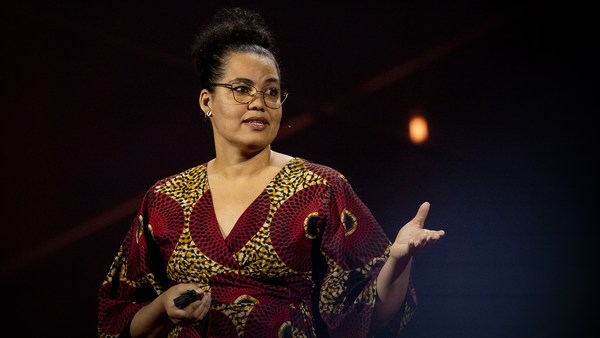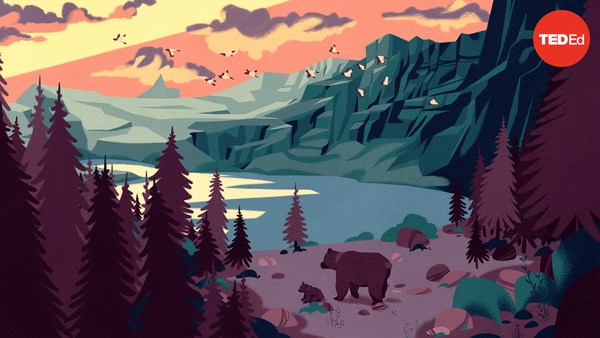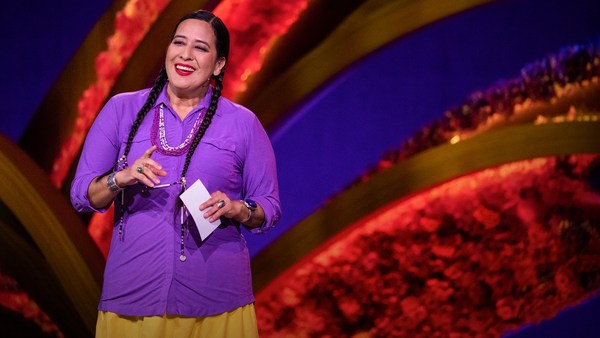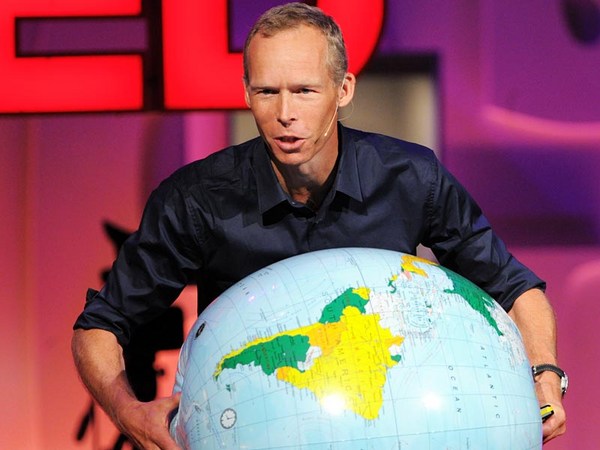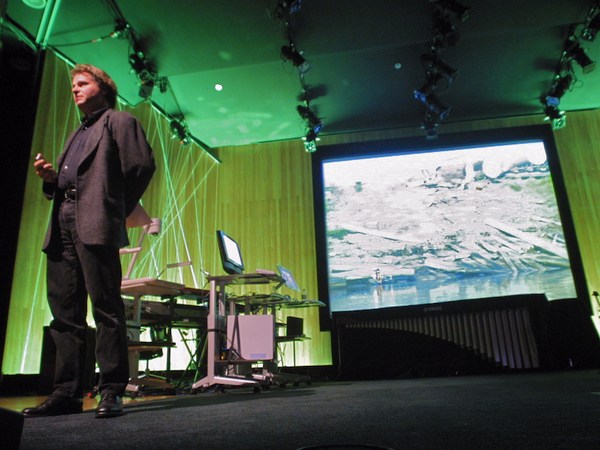Molo ka mana tёw їwekїtomo? I am an Indigenous woman from the Amazon rainforest. I don't look Indigenous, do I? "You're Indigenous?" people always ask me. But don't worry, I get that a lot. I bet you expected an exotic Indigenous woman with a painted face and feathers in her hair. Probably a bow and arrow too. Well, today I won't be talking about the looks of Indigenous people. Today I want to talk to you about Indigenous perspective, what that means and how it can help change this world.
So I come from Suriname, the only Dutch-speaking country in South America. It is also known as the greenest country in the world right now. You didn't know this now, did you?
(Laughter)
Suriname is still 93 percent pristine forests, with a population less than 600,000 people. I come from the south of Suriname, near the border with Brazil and French Guyana. I am from Amazonia, I am Wayana.
I was born in a small settlement with 150 Wayana people. My start in life was complicated. You see, in our culture, when your partner died, you had to wait at least two years before you started a new relationship, my grandmother told me. When my father's wife died, he decided that he couldn't wait anymore and took a new lover, my mother, who was at that time only 16 years old, and got pregnant. Also, certainly in our culture and maybe in yours too, it is considered shameful when you get pregnant and not living with a partner. So because of that, my mother tried to abort me multiple times. All, which as you can see, didn’t succeed.
(Laughter)
It did leave me with some health problems, but I survived.
I was called, for a very long time “anolїtpё”, which literally means trash. My father denied that he was my father because of pressure from his family. But luckily, my mother's parents decided to raise me. Even so, it was hard as I was constantly treated as trash by the rest of my community.
So when I was five years old, my grandparents, especially my grandmother, she decided that it was in my best interest that I go to the capital of Suriname to get an education, to make something of my life. So I packed my little suitcase. I stepped on a plane with a family friend I barely knew, [and] for the first time in my life, I left my village. I remember being determined at only five years old that I was going to go back to show them that I was more than trash. This family friend of ours and his wife, they became my foster parents. And I have been the second daughter that my foster parents always wanted. And my foster family are from a tribal people called Saamaka, and they live as Indigenous people.
Here's the thing. Even living far away in the capital of Suriname, going to non-Indigenous school, surrounded by non-Indigenous people, I was still Indigenous. My worldview and my DNA, were still shaped by that legacy, by those traditions. Because every summer holiday, I could go back to visit my grandparents and learn those amazing cultural aspects of being a Wayana.
So yes, I had the best of both worlds. I have the best of both worlds. And in both worlds I was and am still Indigenous.
What I came to realize is that even far away in the capital, I was privileged to live in the greenest country on Earth because of Indigenous peoples, because of Indigenous guardianship. We are the protectors of the forests, so we protect this world. Eighty percent of all the world's biodiversity is within Indigenous territories. Let me repeat that in case you didn't get that. Eighty percent of all the world's biodiversity is within Indigenous territories. The Amazon, where I come from, is home to more plant and animal species than any other terrestrial ecosystem on this planet, including 40,000 plant species, 2,200 fish, 427 mammals. One in ten of the world’s bird species live in the Amazon, which has been inhabited by Indigenous people for thousands of years.
Now, try to imagine, when non-Indigenous people come to my community to try to teach us about sustainable forest management or conservation.
(Laughter)
We are the forests, we breathe the forests. We cannot even translate "sustainable forest management" in our own language, because to us, it's simply a way of living.
We are the protectors of the forests. It is because of us that the world has any forests left to protect.
I believe, we believe, that protecting the planet should be done by Indigenous people that has been doing so all along. That is why the work that I'm doing with my community is so important. I'm no longer trash. I'm recycled.
(Laughter)
(Applause)
Yes, I'm recycled. The Amazon, where I come from, it's so unique. And sometimes we as human beings, we try to change things so fast, and we try to put our individual needs ahead of the collective good. And because of this change that's going too fast, we ultimately cause destruction that will destroy us all. So today, here I am to teach you guys how you and I can protect this world the Indigenous way.
What is Indigenous guardianship? There are five key words that we can all learn from from Indigenous perspective. The first one is responsibility. Responsibility towards our territory, where we have been living along for thousands of years by taking good care of it. We feel responsible for Mother Earth. So can all of you. Demonstrate the responsibility through action. Do not be afraid to say: "I don't know, let's find out together." Attend activities hosted by Indigenous communities. Lead by example. Talk about decolonizing and indigenizing education with colleagues. Connect with Indigenous people, businesspeople, artists, speakers and craftspeople in your work and your life. Learn about responsibility in the context of our existence.
The second "R" is respect. We need to respect each other. Just like I respect your Western world, you should respect my world. Respect is a word that is a concept that feels often abstract than action-based. It can be very difficult to find specific examples to demonstrate what respect is. We can all become guardians of this world. Respect our way of living. Respect our knowledge. Respect our way of decision making. Respect our Indigenous people's cultural integrity. It has worked for many centuries.
The third “R” ... relationship, the third “R,” relationship, is about Indigenous people’s relationship with their ancestral land. Engaging with indigenous communities ... it’s very important to understand the nature of the relationship among ancestral lands, cultures and spirituality. Engaging in this way requires long-term commitment and mutual learning. A relationship based on mutual respect eliminates the tendency to exert power over another. It is something we can all learn, practice and improve.
Reciprocity is the idea of embracing that giving and receiving connects people, beliefs and action. It is not all about the money, and those who have resources don't have all the power. They shouldn't have all the power. Giving and receiving from the Earth endowments is also part of a virtuous healing principle. In this way, even the "poorest" Indigenous community can give back to all of us.
The last “R”, redistribution. Redistribution of our ancestral lands. My people, for instance, we don't have any legally recognized land rights. Because our ancestral lands have been distributed to third parties as concessions for mining and logging. Eighty percent of the world's remaining biodiversity
is within Indigenous communities, as I mentioned before. And it includes places that are essential for our global climate, our freshwater and food security. These are places vital to all of us. Help in securing Indigenous people's land rights, join us, support us in our fight. Making sure that Indigenous people have the means to protect their lands. We can all benefit from that. Make sure that Indigenous people have the economic power and the cultural independence so they can be successful in protecting, defend and govern their ancestral territories.
So, initially, when my community threw me away as thrash, they just thought that they were doing what was right. They thought that they were doing what was best because they learned those things from Western power, Western colonial powers and norms. And then they learned better. They learned that I also have important and unique values. And guess what? We are all doing the same thing with our planet. We are throwing it away, we are trashing it. Maybe only for a while, because we didn't know any better. Just to realize how much we all need the Earth because it uniquely contributes to our lives, and it sustains us. A healthier relationship is key. A healthier relationship with Indigenous peoples is key to a healthier relationship with the planet that we as Indigenous people protect. And then we can all be recycled.
(Laughter)
And we can thrive and survive on this planet that we call Earth.
Thank you.
(Applause and cheers)
